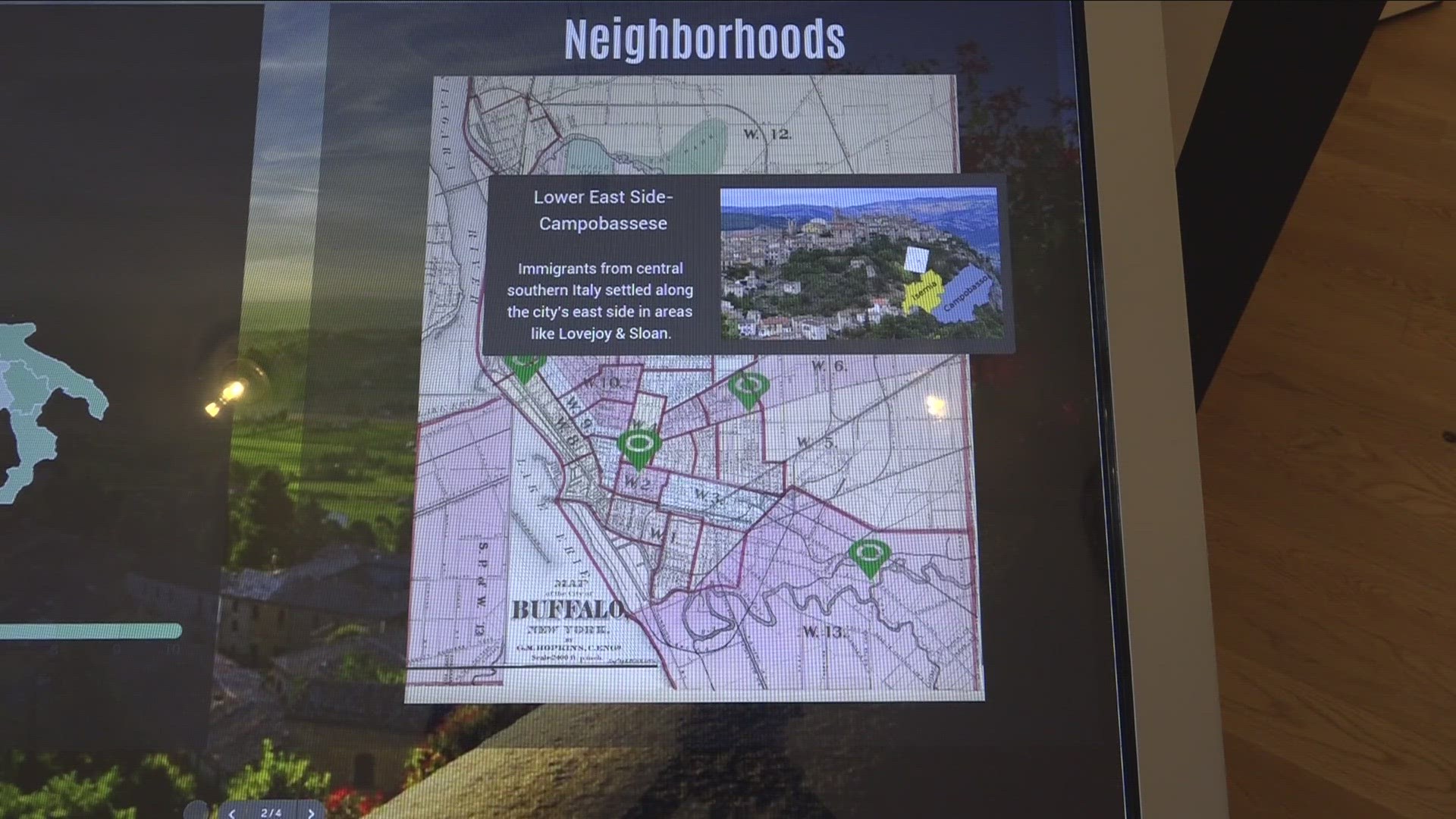BUFFALO, N.Y. — Italian and Sicilian immigrants began to gain a foothold in Buffalo by the late 1800's. By the turn of the century, their numbers reached 6,000, despite finding a less-than-welcoming community. These new Americans faced huge socio-economic barriers, and discriminations.
An exhibit opened this spring at the Italian Cultural Center (also known as Centro Culturale Italiano di Buffalo) at Delaware and Hertel explores those early roots.
An interactive map shows the areas where people from different regions settled, sticking together in this new land. The upper east side had a population from the Abruzzi region. The lower east side, including Lovejoy was the Campobassese region. In South Buffalo, there was a group from the southern Italian region of Calabria. There was a neighborhood in downtown where immigrants from Naples settled.
The largest populations, however, were from Sicily on the lower west side, in a neighborhood known as "The Hooks" after the hooks used by canal workers to unload barges. The area is what we now enjoy as Canalside.
The change came early as Canal Street was renamed Dante Place in 1909. As Italian Cultural Center Executive Director Lindsey Lauren Visser says, Dante Place was not a pleasant area.
"It was considered easily one of the roughest places in Buffalo. It had a bit of a reputation nationally of how crime-ridden it was," Lindsey Lauren Visser of the Centro Culturale Italiano di Buffalo said.
"The tenements were notorious for overcrowding. A lot of the buildings that were designed to accommodate 100 families and they would have upwards of a thousand people living in them."
Visser walked 2 On Your Side's Pete Gallivan through their history exhibit, which includes a display depicting a Dante Place tenement. It includes impressive artifacts, such as keys from an actual Dante Place apartment, dropped off by a visitor, who once lived there. But the most impactful part, as Visser points out, is the layout itself.
"To help you visualize exactly what a tenement room would have been like, the distance between this wall and this wall is exactly 10 feet. The distance between this wall and this wall is exactly 10 feet, which is actually the average size of a tenement room," Visser said.
Dante Place existed until the 1950's when it was replaced by what we now know as Marine Drive, and because we are only talking about a period that existed a couple generations ago, it is an exhibit that hits home with a lot of visitors says Visser.
"I can't even tell you the number of times that people would look at a picture and say, oh, so-and-so lived there, or that's my cousin, or something like that. Because the Italian community in Buffalo is so close-knit that people do see these things. So, for a lot of people it's a very, very personal experience coming in and seeing their ancestors on the wall. For others, its so powerful because it reminds them of something that is so familiar to them."
As you walk through, the thing that hits you is the fact that this population of new Americans, like so many other ethnic groups that came before and after, was able to fight through adversity and climb the rungs of the American dream.
"It really helps you appreciate how hard they worked and what they had to do to get to that point," Visser said.

